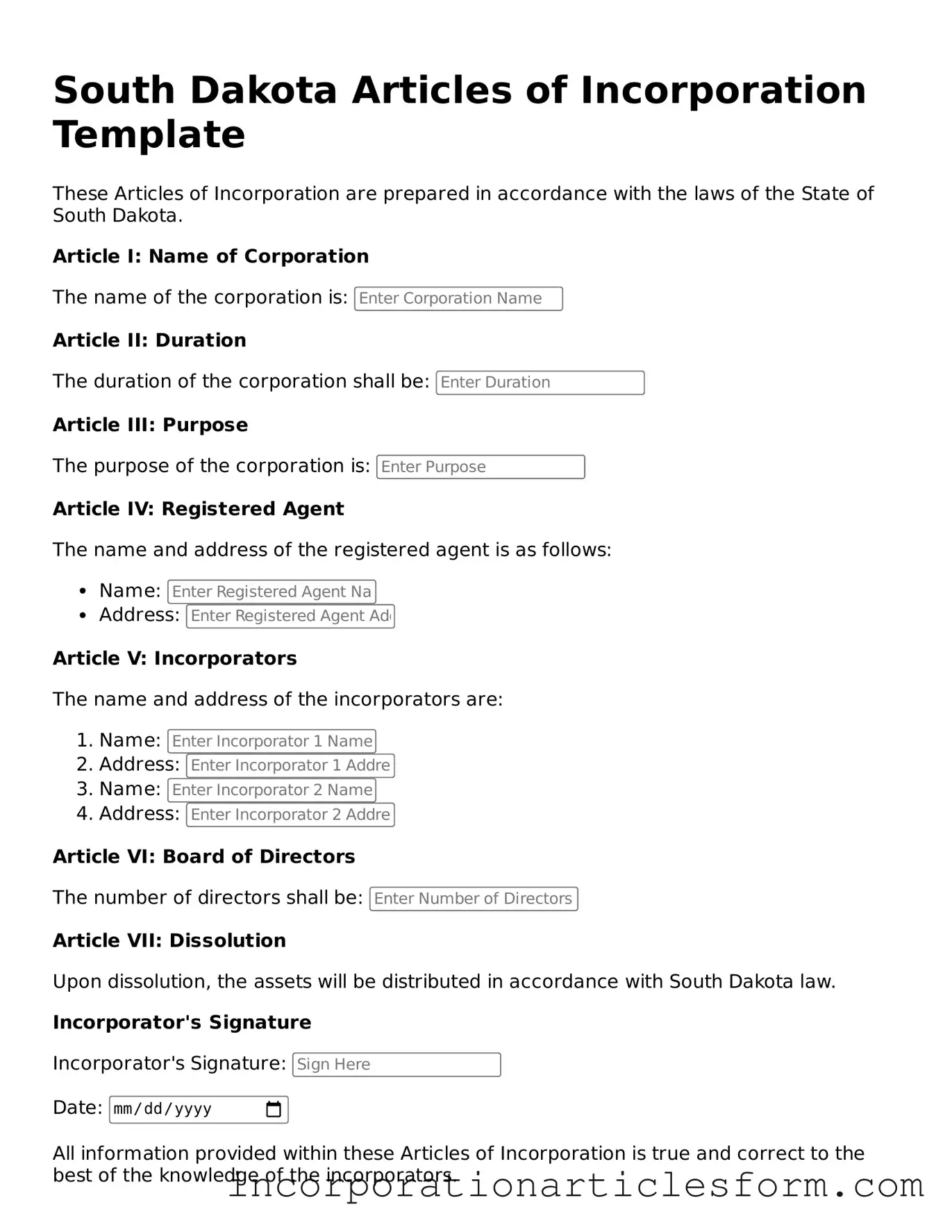The South Dakota Articles of Incorporation form is similar to the Certificate of Incorporation used in Delaware. Both documents serve as foundational legal filings that officially establish a corporation. They include essential details such as the corporation's name, purpose, and registered agent. Like the South Dakota version, the Delaware Certificate requires specific information about the corporation's structure and its initial directors, making it a critical step in the formation process.
Another document that resembles the Articles of Incorporation is the Articles of Organization, which is used for limited liability companies (LLCs) in various states. While the Articles of Incorporation focus on corporations, the Articles of Organization fulfill a similar purpose for LLCs. Both documents outline the basic structure of the entity, including its name, registered agent, and business purpose, thereby providing legal recognition and protection to the business owners.
The Corporate Bylaws document is also akin to the Articles of Incorporation. While the Articles serve to create the corporation, the Bylaws govern its internal operations. They outline the rules for managing the corporation, including the roles of officers and directors, meeting procedures, and voting rights. Together, they provide a comprehensive framework for both the establishment and governance of the corporation.
The Statement of Information, often required by various states, parallels the Articles of Incorporation by providing updated information about a corporation after its formation. This document typically includes details such as the corporation's address, officers, and directors. While the Articles establish the corporation, the Statement of Information ensures that the state has current records, helping maintain transparency and compliance.
In some states, the Certificate of Formation serves a similar role to the Articles of Incorporation. This document is often used interchangeably for corporations and LLCs, depending on the state. It provides the necessary information for the entity's creation, such as its name, purpose, and registered agent. Both documents are essential for legally recognizing the business and protecting its owners from personal liability.
The Nonprofit Articles of Incorporation is another document that shares similarities with the South Dakota Articles of Incorporation. This form is specifically designed for nonprofit organizations and outlines their mission, structure, and governance. Just like the Articles of Incorporation for profit-driven entities, it establishes the organization as a legal entity and provides guidelines for its operation, ensuring compliance with state laws.
The Foreign Corporation Registration form is comparable in that it allows a corporation formed in one state to operate in another. This document requires the corporation to provide its Articles of Incorporation from its home state, along with additional information about its business activities in the new state. Both forms serve to ensure that corporations are recognized and regulated appropriately across state lines.
The Assumed Name Registration, also known as a "Doing Business As" (DBA) form, is similar in that it allows a corporation to operate under a name different from its official name stated in the Articles of Incorporation. This document is crucial for branding and marketing purposes. While it does not create the corporation, it complements the Articles by providing a legal framework for the use of an alternate business name.
Lastly, the Partnership Agreement can be seen as analogous to the Articles of Incorporation in the context of partnerships. While the Articles establish a corporation, the Partnership Agreement outlines the structure and operation of a partnership. It details the roles, responsibilities, and profit-sharing arrangements among partners, ensuring that all parties are on the same page regarding their business relationship.
